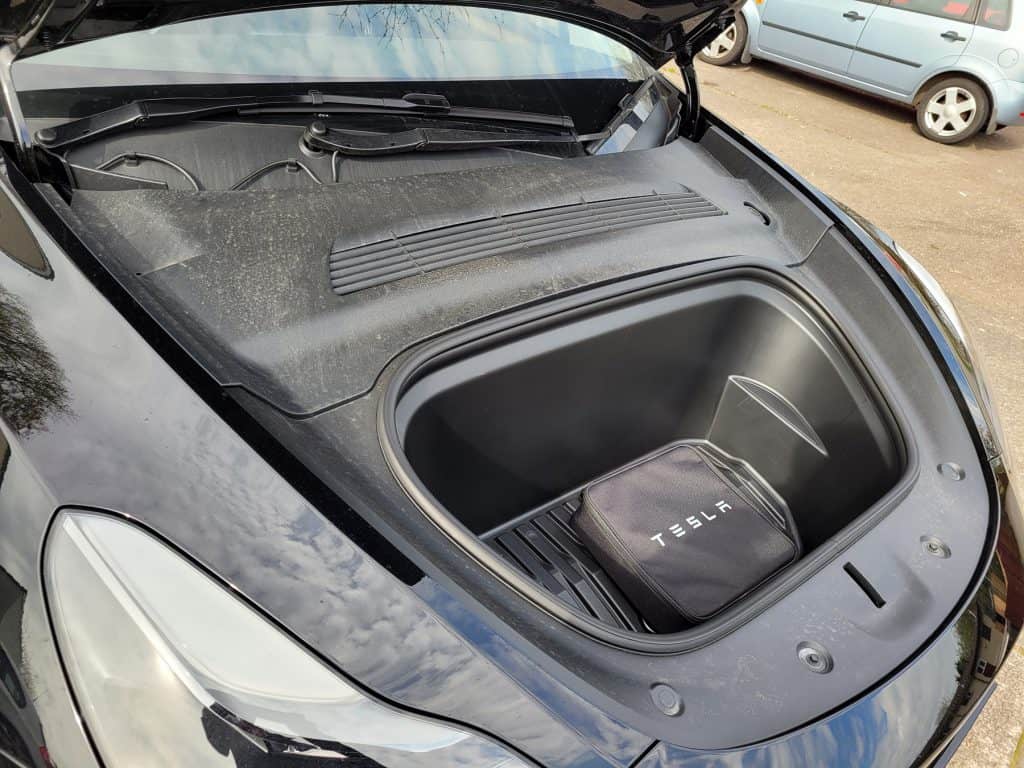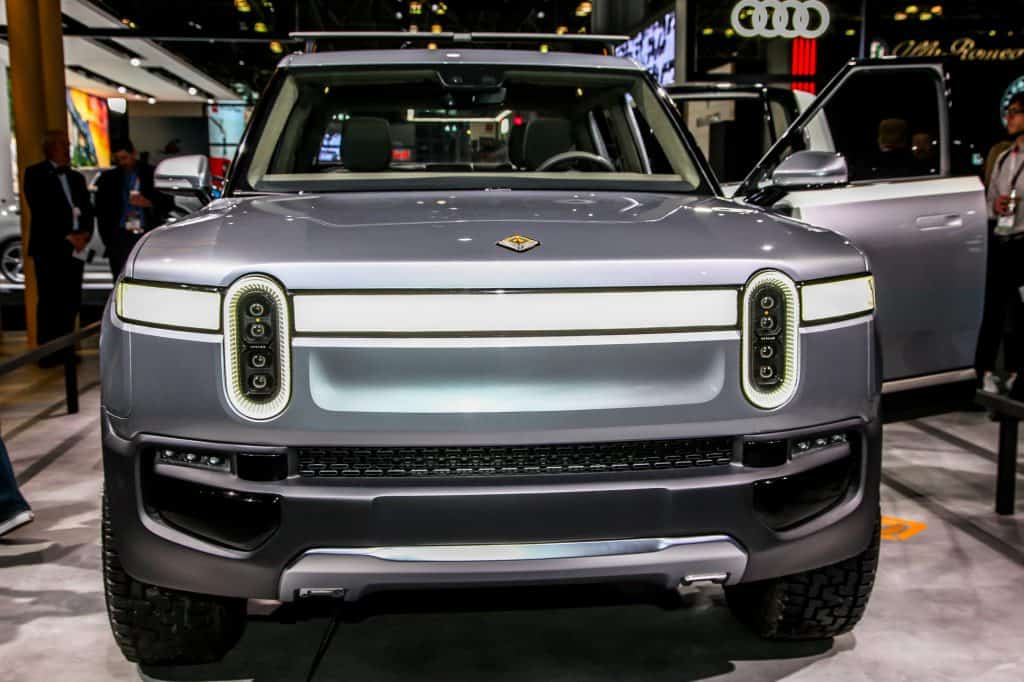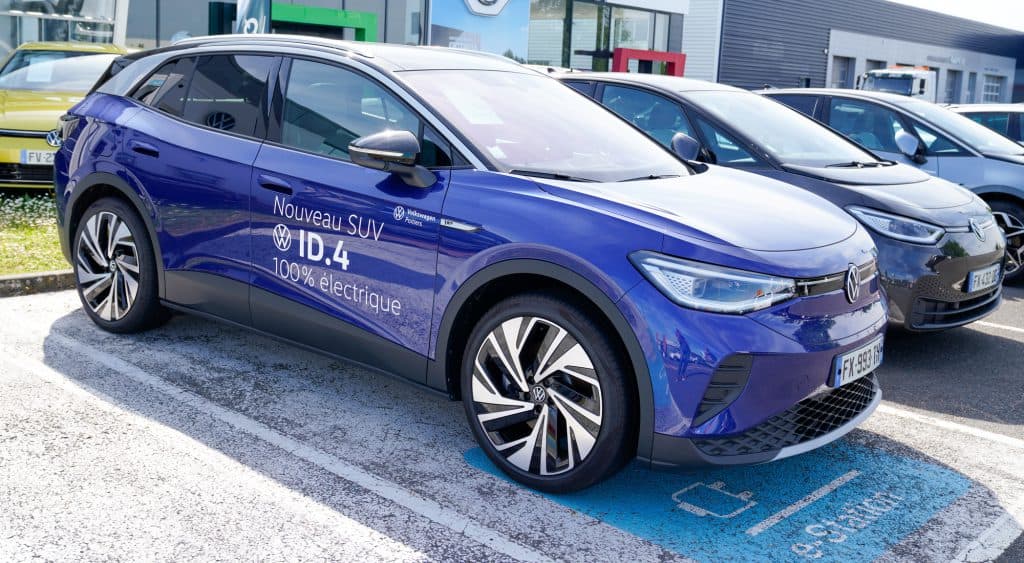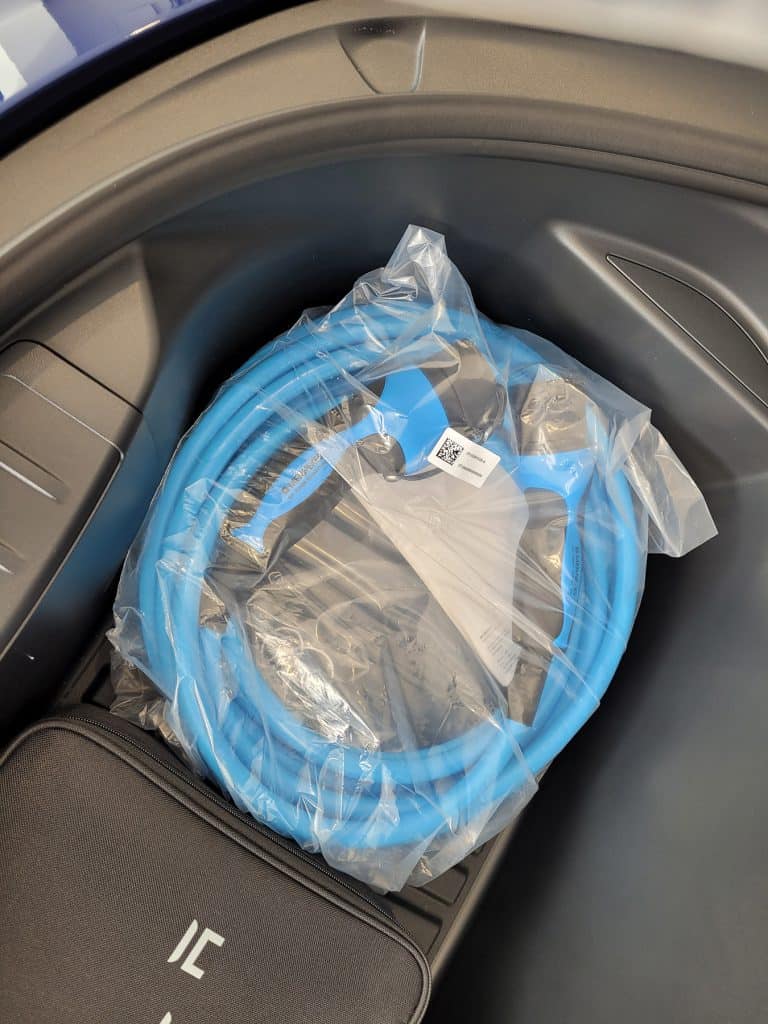Have you ever heard other EV owners talking about something called a “frunk” and wondered just what on earth they were talking about? You’d be forgiven for it, because while the concept isn’t new, the term is relatively new, first coined by Tesla owners.
Since electric cars don’t have front-mounted engines (or engines anywhere else), and with most of the electrical components placed lower down in the car closer to the battery, there was a new opportunity for a front-end space to be created. This was known as the front trunk, which then became “frunk.”
Of course, such a notion has existed in cars with rear-mounted engines, of course, but the big difference is that with an EV, you get a frunk and a trunk. It’s no longer a one or the other game.
Or is it? As it happens, a surprising number of electric cars do not come with a frunk, and in today’s blog we’re going to explore the reasons for that, and whether or not frunks are even a good idea.
Which EVs Have Great Frunks?
Let’s start on a positive note by looking at those brands and models that have embraced the frunk entirely and gone out of their way to create a useful storage space for their buyers to use.
Tesla Models

Tesla is probably the best-known electric car “frunk” brand, and is the brand that the term is most closely associated with. Some are critical of Tesla and Musk for “championing” this idea when they clearly have invented nothing. The frunk isn’t a new thing, as we’ve already mentioned. Regardless, Tesla models offer frunks that many Tesla owners have said are genuinely useful.
At 6.6 cubic feet, the Model X offers the largest single frunk. The others range from 4.5-5.5 cubic feet in volume, offering enough space for groceries, a suitcase perhaps. Fans of the brand like that they can get a frunk on any Tesla model they buy.
Ford Mustang Mach-E
The Mustang Mach-E only has a frunk measuring 4.7 cubic feet, but that’s still bigger than the trunk you get on some sports cars: we’re looking at you, Mazda MX-5 Miata! It also features innovative additions like space dividers, water-resistant materials, and a drain so you can wash it out directly with a hose.
Ford took some widely shared photos of their frunks full of shrimp, and another full of chicken wings as a way to show you could use the frunk creatively and in fun without worrying about mess. Just hose it all down and it’s back to normal, right? The Mach-E also has solved the problem of front-end ventilation to help make its frunk more of a healthy storage environment.
Ford F-150 Lightning
Ford’s first electric pickup truck has a frunk that has been named the Mega Power Frunk. At 14.1 cubic feet, it’s easy to see how it got that name. The F-150 Lightning frunk is bigger than a Mercedes E-Class trunk! It can carry up to 400-lbs of payload safely, has a drainable floor, and has four electrical outlets, 2 USB chargers and a 2.4-kW power source for tools and whatnot. This is an example of the real potential of frunks.
Lucid Air
It’s perhaps not surprising to learn that the Lucid Air offers a frunk when its main designers and engineers came from Tesla. The company claims, however, that its frunk in the Lucid Air is up to four times as large as other car frunk offerings (not including the trunks here, of course). At 10 cubic feet they are certainly right that it’s bigger than its main rival, the Tesla Model S (5.3 cubic feet).
Rivian R1T

When it comes to storage, the Rivian is arguably better known for the innovative “Gear Tunnel” situated between the rear seating area and the storage bed, measuring 11.7 cubic feet. They augment this with a more regular frunk under the hood that will be accessible by key fob or via the smartphone app. The frunk will measure 11.1 cubic feet, giving the Rivian a distinct edge in total added storage space.
Which EV Models Do Not Have Frunks? Why?
A surprising number of mainstream and popular electric vehicles do not offer a frunk. They include the following models:
- Volkswagen ID.4
- Nissan Leaf
- Chevrolet Bolt EV
- Mini Electric
- Volkswagen e-Golf
- Kia Niro EV
- Hyundai IONIQ Electric
- And others from the same manufacturers
Some of these are among the longest-running (e.g. Nissan Leaf) and best-selling (e.g. VW ID.4, Chevy Bolt) EVs on the market, but no frunk. Why did these OEMs not deign to put this innovative and useful space in place?
Well, it’s hard to find any official comment, but theories abound. Perhaps the most convincing is that despite the efforts of Ford to make their shrimp- and wing-filled frunks appealing, the reality is that the frunk isn’t as useful or purposeful as people are saying it is.
The Volkswagen ID.4 was particularly lampooned for not having a frunk, especially when its direct competitor, the Mustang Mach-E did, and over which Ford made such a song and dance with their food-filled frunk photo opportunities. But perhaps there are good reasons some OEMs omit the feature.

Lacks Environmental Control
The front-end of the car is far harder to regulate than the rear-end because it’s essentially a kind of lock-box, whereas a regular trunk has the benefit of ventilation and environmental equilibrium with the rest of the passenger cabin.
This makes the long-term use of such a storage space somewhat questionable. The Mach-E frunk is a notable exception to this, but it’s not yet the rule.
Difficult to Access
Most frunks have to be opened from inside the car. Some, like the Porsche Taycan, can have their frunk opened using a swipe control, but only if you’ve paid for the “Comfort Access” feature.
Some also allow you to open it from outside if you have the key fob about your person. In many cases, however, such as on the Mach-E, you have to open it like you would the hood when you want to check your oil.
Not a Trunk Equivalent
To date, virtually no frunk, with the exception of those large ones on big pickup truck models, has created a storage space that is really as meaningful or as useful as the trunk. The fact is that people will more likely (and happily) put all their stuff in the one space that can hold it all, rather than dividing it up between two spaces.
Imagine, for instance, thinking that something you need was in the trunk, only then to realize it’s actually in the frunk, having to get back in the cabin, find the special frunk lever and open it up. All that back and forth isn’t worth it. Frunks simply end up not being used.
Verdict: Frunks – Are They Worth It?

Clearly, not every EV needs to have a frunk, but it seems to us that the nay-sayers need to come up with more convincing reasons not to think about a frunk when companies like Ford and Rivian are demonstrating their utility and potential. Some OEMs do have reasons, like Mercedes-Benz, who say that they didn’t give the EQS a hood because they want to “prioritize the Energizing Air Control Plus System,” which needs the hood space more.
If EV makers can follow the examples of those OEMs that have made frunks both innovative and easy to access, there’s no reason we shouldn’t expect to see further innovative uses for this space, perhaps something that helps to make EVs all the more attractive the undecided masses who still sit on the fence about making the switch. Electric vehicles will need every advantage they can get to set them apart from ICE vehicles. The frunk could be one of those things.